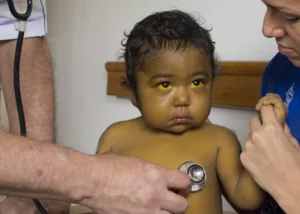he liver is an organ that can present complications but not generate noticeable symptoms in the short term for people. For this reason, it is important to keep up to date with the pertinent medical check-ups and possible treatments to rule out any anomaly.
In the previous article we discussed the most common signs of liver disease, and said that discovering the cause and extent of a liver problem is important in order to indicate a treatment.
Now, we will talk about possible treatments for symptoms and the diagnostic process. Your doctor will probably start with your medical history and a thorough physical examination.
Treatments for signs of liver failure
- Fluid retention: A low-sodium diet may help relieve mild fluid retention. For moderate to severe retention, your doctor may prescribe diuretics, commonly known as “water pills”.
- Severe cases often require paracentesis, using a needle to drain abdominal fluid, according to specialists.
- Jaundice: This condition causes darker urine and a yellowish tint to the skin or whites of the eyes. According to doctors, jaundice is a serious sign of liver failure. If you have this condition, your doctor may evaluate you for a liver transplant.
- Bleeding: If you are vomiting blood, go to an emergency room immediately. Doctors will evaluate and stop the bleeding with an upper endoscopy.
Diagnosis
Discovering the cause and extent of the liver injury is important to indicate treatment. Your doctor will probably start with your medical history and a thorough physical examination. Your doctor may recommend the following:
- Blood tests: A set of blood tests known as liver function tests may be used to diagnose liver disease. Other blood tests may be done to screen for genetic conditions or specific liver problems.
- Imaging tests: An ultrasound, CT scan, and MRI may show liver damage.
- Study of a tissue sample: Removing a tissue sample (biopsy) from the liver can help diagnose liver disease and look for signs of liver damage. A liver biopsy is often performed using a long needle that is inserted into the skin to remove a tissue sample that is sent to a laboratory for testing.














